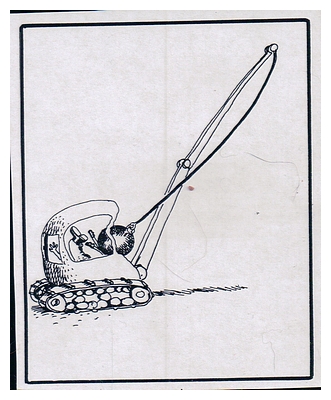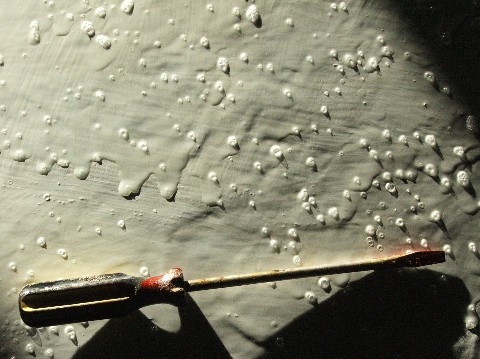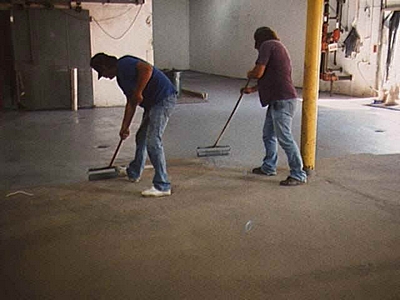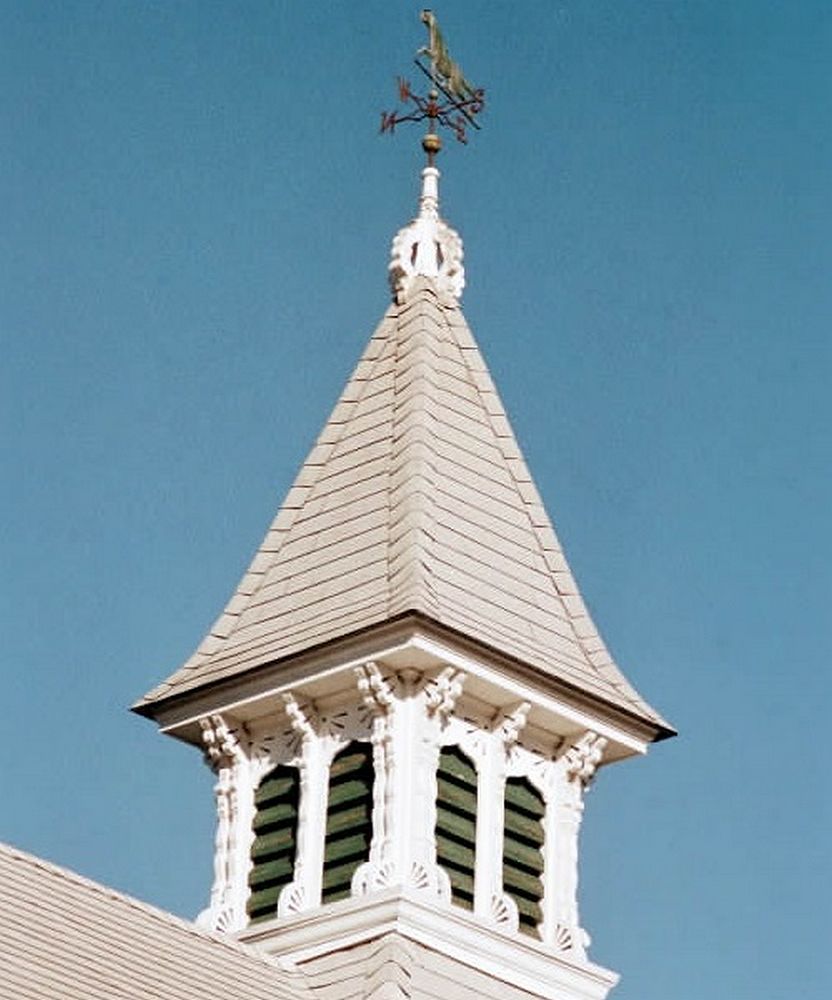
GOOGLE SITE SEARCH - Click here
Epoxy Floor Garage Paint Problems
Guide
What can go wrong with epoxy floor paint
Your Host and Tour Guide:
Paul Oman, MS, MBA - Progressive Epoxy Polymers, Inc. (floor epoxies, marine epoxies, underwater epoxies, repair epoxies)
Member: NACE (National Assoc. of Corrosion Engineers), SSPC (Soc. of Protective Coatings)
"Professionals helping Professionals"
PROGRESSIVE EPOXY POLYMERS, INC.
We are the only technology based coating/epoxy/resin company that actively encourages your phone calls, not just during our East Coast work hours but also after/before hours, evening, weekends and even holidays. We're available when you are. We form a personal relationship with our customers and freely share technical information, how to-advice, product information and tips-and-tricks. Speak with a non-salesman technical professional with over 25 years of experience in the resin/coating/epoxy industry (no newbie staffer on the phone lines!). Floors, tables, boats, leaks, rot repair. We handle it all! We are an 'always available,' one-on-one, technical/scientific, coating company (watch our video). We are NOT one of those fluffy/slick mass sales firms the dominate the internet selling cheap third party (made in China???), low end epoxies and coatings with no real knowledge of what they are selling and quotas to sell to as many people as possible. 603-435-7199 (east coast time).
|
PAGE AND SITE NAVIGATION |
|||||||||||||||||
|
Epoxy Floor Links Page ====> This 'Linked To' Sub-Page
No Sales Tax applied. Save Money, you're shopping in Tax Free New Hampshire
MEMBER: Internet Epoxy Confederation (IEC - CLICK HERE TO VISIT) -- "Where Professionalism Still Matters"
We've been selling epoxy - marine epoxy (boat building - wood / fiberglass repair) industrial coatings - garage paint - underwater epoxies - thick putties - tabletop resins and supplies since the early 1990's |
Epoxy Floor Section in our online catalog - CLICK HERE
WHAT CAN GO WRONG APPLYING AN EPOXY FLOOR COATING

Gary Larson illustrates a day gone bad
keywords=best epoxy floor paint
We are probably the only people that will tell you up front what sort of bad things can happen. Obviously, they
don't happen too often or no one would dare sell or use these products. Our goal is to have you go into the process
well informed. It is your time, money and floor at stake. With most of the problems mentioned below, there is no
easy fix or solution (another coat is often the best fix).
Because of all the unknowns, generally the warranty for any epoxy coating in very simple terms is that if mixed as directed it will harden. If problems develop due to user error, poor surface preparation, or a surface not suitable for coating that is not something the manufacturer can control or take responsibility for. The risks certainly are in the user's court even for things that might be completely outside his or her control. For our particular company, if we are responsible, we only replace a single unit of product so if you have a problem stop after opening a single unit (this is due to people who will use lots of 'bad product' and demand enough 'free' product to do another different project at not cost to themselves).
ADHESION ISSUES
The worst problem you can have with a rolled on epoxy floor is adhesion failure. The epoxy lifts off. People like
to claim the epoxy is at fault, but that is rarely the case. Usually the epoxy they purchased is part of a larger
production batch and it is hard to imagine that their 1 gallon was somehow bad while all the other 99 gallons of
the same batch worked fine for all the other customers. If the epoxy got hard, as it should have, it is almost
certainly not the epoxy.
So why did the epoxy lift off? Several possibilities. - The concrete was dirty, or crumbling. Check for this by looking at the bottom of the peeled epoxy. Is it clean or covered with a layer of dust/sand/dirt? Was there water/dampness on the back of the epoxy?
Dust or dirt means the floor wasn't clean when the epoxy was applied (I saw this once with a warehouse where lots of dust had come in from a giant open door prior to applying the epoxy). With a weak crumbling floor, a solvent thinned epoxy used as a primer would have consolidated the surface MAYBE well enough for the pigmented floor epoxy to have something solid to bond to. Fresh, new cement has a weak crust of dirt and trash that needs to be removed prior to coating.
Water under the peeled epoxy could show that the cement was damp or wet when the epoxy was applied (some epoxies bond better than others to damp surfaces) or that water is actually migrating through the cement. If the water isn't the problem, it could be the dissolved minerals in the water that are causing the problem. When the crystals reform they can produce 2000 pounds of pressure that will pop most or all coatings. Generally, the moisture issues need to be addressed or fixed before any coating can be applied to the floor. Our Bio Vee Seal product MAY help. It is possible that the floor may be simply unsuitable for coating.
The epoxy could also fail due to some sort of surface contamination and/or inadequate surface preparation. Epoxies and most coatings will not stick to oil, grease, wax stains and spills or previously applied sealers containing these products (Thompson's Water Seal for example - maybe applied by a past owner and you have no idea it was applied). Degreases may or may not work. Even if you think you've got it clean\degreased it can still be contaminated. I have seem places where the oils/greases were so bad (even though the surface seemed clean) that even the professional applicators could not keep anything adhering to the floor even after several attempts. The cement in front of a deep fat fryer is a classic example. In cases like this, smart contractors turn down the job. The surface probably cannot be successfully coated. In 'must be done' situations, a new layer of cement is first applied over the old cement.
A very smooth finish on the cement can also cause a problem. A bit of roughness in the cement is a good thing. It is what ACID ETCHING attempts to produce.
Finally, there are additives added to the cement sometimes that will affect the bond. I have very little knowledge of these but something like a silicon can be added to help get the air bubbles out of the cement when it is poured. There is no way to know this in advance and their is probably nothing you can do about it.
What can you do if your epoxy floor lifts? About all you can do is let all the epoxy that is going to lift off, come off. Then attempt to fix the cause of the lifting in those areas and recoat with more epoxy. The problem with 'surface prep' issues is that you never know if you did enough surface preparation until after the fact (or if you should have used a primer coat first).
AIR BUBBLES
Air bubbles in a thick floor epoxy will cause round bubbles and, more commonly, mini creators (with razor sharp
edges). Bubbles can come from three sources, air trapped in the epoxy from to vigorous mixing (you're not making
whip cream!); (2) or (maybe) from your roller if using a foam roller or thick nap roller. (3) 99% of the time it
is OUTGASSING from the cement. Air in the cement is forced out of the cement and gets trapped in the thick epoxy.
When air heats up it expands and pushes it way out of cement. When it cools it contracts. So, the idea is to keep
everything at a constant temperature or work when the air (i.e. the cement) is cooling down and not warming up.
Rarely is outgasing a problem in residential garages but it is common when epoxy is applied to cement outside in
the sunlight and on coarser, 'industrial grade' cement. Also, I think 'vibrators' are used on residential floors
when the cement is poured to remove air bubbles and void spaces in the cement.
Besides working in constant or cooling temperatures the other preventative measure (which may not be 100% effective) is to prime or seal the surface with a very thin coat of solvent thinned epoxy (or a thin coat of the waterbased epoxy). The thinner coatings soak into the cement and fill the void spaces. Any bubbles that form can rise and pop in the thinner coating before it becomes trapped. And even if trapped, the coating is so thin that the bubbles remain very very tiny. When the actual coat of floor epoxy is applied the surface has already been sealed and little or no air is left to 'bleed' into the floor epoxy.
Often it can be best to apply a primer/sealer and or apply the coatings at night when the temperatures in the slab
are cooling and the air is contracting.
You want to use an epoxy solution.
Reduce or eliminate by sealing the cement first with a thinned epoxy sealer like our ESP 155™ (NOT FOR SALE IN CALIF)

More on "pinholes" - Click Here.
More on "primers" - Click Here..
There is the internet story of someone who didn't read this page (or use our products!) Probably our waterbased
epoxy as a primer sealer would have (most likely) solved the problem. Better is that 2AM "when temps are falling"
application.
This was a public posting on an internet boat building newsgroup...
So I have an 18oo sq ft boat building shop with attached 300 sq ft drive -in paint booth. Shop floor was badly cracked and heaved- so I had it broken up and repoured as a new smooth floor. I waited 30 days to cure. I intended to coat the concrete with epoxy to make it as smooth and dust free as possible. I studied the options carefully and selected (XXXXX - not our product!), as the best system. Not cheap- I paid $1500 for the 5 kits. Anyway I did the prep work carefully- which calls for acid cleaning, scrubbing and then a triple rinse. I mopped it 6 more times, vacuumed it and made sure the shop was 70 degrees for several days so the slab would be warm. I coated it exactly according to directions. When I had completed about 1/4 of the slab, I noticed the new epoxy was bubbling and forming little craters. I called their tech line and they told me to take a leaf blower to it. I told them I tried that and it didnt work.The girl ( yes- girl on the tech line) told me the craters would go away. So I completed the shop floor. Next morning it looked like the surface of the moon- see attached picture. I called the company again- got same girl- and told them I was highly displeased- and what to do about this mess. She said it would have to be ground off and recoated. They said I didn't blow it enough- or maybe I stirred it too much and got too much air in it. Hmmmmp. Anyway I asked how they were going to stand behind their product given that I had applied it faithfully to their instruction. BTW- we make epoxy composite boats- we are VERY experienced handling epoxy. Anyway- girl goes gets guy- and I explain all over again- and point out to him how very difficult it is to grind epoxy off an 1800 sq foot floor. TO THEIR CREDIT- the company offered me one free kit, and $40 off each additional kit I would have to buy. I then go out and ground off bubbles and craters from first layer and apply new epoxy. This worked well- no bubbling- but only because concrete was still coated-or at least sealed with the first layer. I then went to the 300 sq ft paint booth. This time I had two bubbas standing by with 12 amp leaf blowers- the most powerful I could find. I coated as before- and YUP still cratered and bubbles as before. Blowing wind made no damn difference at all.
The leaf blower deal is news to me! You cannot blow the bubbles out of thickening epoxy...
But it does bring up an intesting point. We know you are looking at other vendor's epoxy floor coatings. We put the problem of air bubbles up front, out in the open. Sure, it will cost us business. Our competitors' products have the same problem. If they don't warn you of the possible bubble issue, they're not being completely honest or open with you. They know they're not responsible for the air in your cement, so you cannot hold them at fault. There is nothing wrong with the epoxy - it behaved as it should. Judge your epoxy supplier, not by what they tell you, but by what they don't tell you!
We really appreciate you visiting PROGRESSIVE EPOXY POLYMERS, INC. and our web site: EPOXYPRODUCTS.COM. Take advantage of the CONTACT links on this page to ask questions about our products and/or your projects. You can stay in touch with us via our NEWSLETTER (link on our contact page) which is emailed every 6-8 weeks.
This current page is all about:
Epoxy Floor Garage Paint Problems
Guide
What can go wrong with epoxy floor paint
|
|
WOW! 35% - 40% of all daily online or telephone orders are from existing customers. That's an amazing 'REPEAT CUSTOMER" number. |
|
603 - 435 - 7199 ANYTIME 24/7 FOR HELP OR ORDERS |
|
|
|
|
BLISTERS
Osmotic blisters (just like those that sometimes form on fiberglass boat hulls) can form under epoxy floor coatings
on cement surfaces. The blisters contain mineral rich smelly water under pressure. Pop the blister and they generally
will squirt water out. Osmotic blisters on boat hulls and cement floors are hard to explain. Their formation has
something to do with localized differences in minerals or chemicals in a liquid (chemical or water) micro environment,
up against an impermeable surface (the outside boat hull or the epoxy floor paint).
To prevent or reduce osmotic floor blisters one can:
1) opt for a 'breathable' floor coating (our water based floor epoxy, like most water based epoxies is considered somewhat breathable)
2) our bio vee seal MIGHT reduce fluid movement within the concrete enough to reduce or prevent the movement of the fluids to the forming blister site
3) our waterbased floor epoxy MIGHT combine/use/seal the water based fluids that would form the blisters in the future (plus the benefits from #1 if not topcoated with the non breathable Industrial Floor Epoxy).
so..... the bio vee seal and/or the waterbased floor epoxy MIGHT be the needed prep under a coat of the solvent
free Industrial Floor epoxy....
If you already have osmostic blisters you probably need to remove the epoxy floor and reconsider your options.
BLISTERS AND ALSO BE CAUSED BY THE COMPOSITION OF THE CEMENT WORKING WITH MOISTURE IN THE CEMENT - SEE THIS 3RD
PARTY ARTICLE - CLICK
HERE
POT LIFE
Once you mix the 2 parts of the epoxy a chemical reaction begins. The epoxy in the mix container will stay spreadable
for 15 - 60 minutes or so. It them becomes VERY HOT and will harden or gel within seconds or minutes (this will
not happen to the epoxy spread out on the floor). You have to apply the epoxy before this 'kick' reaction happens.
The time you have to apply the epoxy is called 'Pot Life.' When your batch of epoxy kicks (goes off), there is
nothing you can do with it. You need to mix up a new batch of epoxy and get back to work. Ideally your batch sizes
are small enough that you use it all up before the batch 'kicks'. Your pot life is determined by several things
- the temperature, the amount of the epoxy mixed, the shape of the container, etc. Never mix more epoxy than you
can apply within 15 or 20 minutes and you should never waste any by exceeding the pot life. Warmer temperatures
and larger amounts of epoxy will shorten pot life. Some folks will keep the mixed epoxy surrounded in an ice water
bath to keep it cooler and extend potlife when the weather is warm. Also it is common to mix the epoxy and then
pour it directly upon the floor (skipping the roller pan). This spreads out the epoxy and extends pot life. MIXING
AN ENTIRE 1.5 GAL UNIT OF EPOXY IS NOT RECOMMENDED. AT THAT VOLUME, POT LIFE CAN BE 5 TO 15 MINUTES - (ONLY ENOUGH
TIME FOR A POTHOLE REPAIR OR A TABLE TOP POUR, NOT ENOUGH TIME TO SPREAD OUT A FLOOR EPOXY). THE HEAT RELEASED
WHEN A 1.5 GAL UNIT OF EPOXY REACHES THE END OF ITS POT LIFE IS DANGEROUSLY LARGE. The small 1 gal units of our
water based floor epoxy can be mixed as a single 1 gal batch.
VISCOSITY
Epoxies are thicker than 'regular' paints. Even though floor epoxies are thinner than most other epoxies, their
thickness surprises a lot of people (note -water based epoxies are much thinner than other epoxies). Epoxies get
much thicker at cooler temperatures (including when put on a cold floor). A little bit of solvent (generally something
like Xylene) will noticeable thin the epoxy.
INDUCTION TIME (SWEAT IN)
Some epoxies (and most 2 part polyurethanes) have an induction time associated with them. This means after mixing
the 2 parts you need to let the mixture sit for some period of time before using it. If you skip this step, the
epoxy may not get hard and/or the color may be off.
MIXING
Mixing too fast can leave air bubbles in the epoxy or urethane (see above). No matter how well you mix, you will
never be able to mix the materials on the side of the container and where the bottom and side of the container
meet. If you try to get every last drop out of your mixing container, the last little bit will be these unmixed
product. The result will be spots where the epoxy coating will never hardener or will stay tacky.
COLOR DIFFERENCES
Like with all other paints, yarn and fabric, there can be color differences between batches of epoxy. If you order
your epoxy in small units (say under 5 or 10 gallon packaging) it is very possible that the cans may come from
different production batches. Also pigments can settle to the bottom of the cans and with thick epoxies that are
harder to mix you might get color differences just because you didn't 're-mix' the epoxy's pigments in the cans
equally well. This is really no different from 'regular paints'. Blend your different cans of pigment epoxy together
to help maintain constant color. When 1/2 through a can of pigmented epoxy (usually part A) open the part A of
the next can and begin blending the two together so that the sift from part A in unit 1 to part A in unit 2 is
gradual.
Also keep in mind that epoxies are not color stable in natural light (mostly UV). In other words, epoxies all yellow
(even the pigmented ones. Epoxy that has been exposed to sunlight will become a different color than the same epoxy,
from the same batch, still in the can.
EPOXY STAYS TACKY
If it is just tacky in spots but hard in other places, this is poor mixing (see MIXING above). Did the product
have an induction time that you missed? If all of the surface is tacky, did you mix the two parts in the correct
ratio (sometimes folks forget to combine the two parts at all!). This is another situation where the user often
claims the epoxy is defective, but again, if none of the other users from that same factory batch of epoxy had
the same problem, it is hard to assume that it is the product and not something the end user did wrong.
The epoxy may also be tacky if you haven't given it enough time to get hard. Cure time is temperature dependent. Cold nights could slow the cure rate down to zero. Curing will continue when the temperatures warm back up. Still, the epoxy should be hard within a few days at most. Raising the temperature and, in the case of water based epoxy - circulating the air (to get the water to evaporate away) may solve the problem.
THE MOST COMMON REASON PEOPLE GET TACKY SPOTS ON AN OTHERWISE
WELL CURED/HARD FLOOR IS POOR MIXING OF THE 2 PART EPOXY AND/OR ATTEMPTING TO USE EVERY LAST DROP OF EPOXY THAT
SETTLES IN THE BOTTOM OF THE MIXING POT. POUR OUT THE MIXED EPOXY ONTO THE FLOOR BUT DON'T USE THE FEW OUNCES OF
EXTRA EPOXY THAT COLLECTS IN THE BOTTOM OF THE MIXING POT AFTER IT SITS FOR A FEW MINUTES. THAT EPOXY IS FROM THE
SIDES AND EDGES (BOTTOM AND SIDE CORNER). NO MATTER HOW WELL YOU MIX THE EPOXY THAT BIT OF EPOXY IS NOT MIXED COMPLETELY.
This problem, unlike most of those above, does have a fix. Scrape off or remove as much of the uncured epoxy as
you can (you can leave behind a bit of tacky epoxy residue if necessary). Then recoat with more epoxy. The new
epoxy will 'fix' the little bit of uncured epoxy left behind after removal.
|
Risks of using epoxy in basements and below grade environments Q: The first six months, the epoxy floor looked awesome. Then shortly after, a couple of alkaline deposits formed. Next, the epoxy started to bubble up in isolated areas.
Water-based epoxy paints are often semi-breathable and much thinner, and may sometimes work (see our Water Bond (tm) epoxy). |
A recent email I received (No - they weren't using our
epoxies, but suspect some thing could have happened if they were!
"I have got a floor coated with epoxy 4 days ago the temp. in the area is 80 and the floor is still very tacky the company that done this job told me that I could use the floor the next day he coated the floor in the one day with 4 men 14000 sq feet could I have the expansion joints filled AS they now open and look very bad also there are spots where air bubbles have shown up is there any thing I can do with those bubbles I had the floor power shot as it was very dirty it had being used as a warehouse and the concrete floor had a lot off cracks in it what is the best filler to use."
--- probably needs a second coat to 'fix' most of these problems - paul
Epoxy Only Web Google Search
#1) Google
Everything Epoxy Searches
#2) Google
Marine Epoxies Searches
#3)Google
Floor Epoxy Searches View
our Progressive Epoxy Products, Inc.


|
Links to Lots of MUST READ Information Articles About the Best Epoxy Floor Paints, Including Preparation, Alternatives, What Can Go Wrong, etc.
|
|
Bio Vee Seal - INTERNAL CONCRETE SEALER |
SOME OF THE SITES THE ABOVE LINK WILL DIRECT YOU TO |
|
Clear Top Coats - FLOOR CLEAR TOP |
Best Floor Epoxy - CLICK HERE |
|
Epoxy Quartz Floor - BROADCAST FLOOR |
Acid Etching - ACID |
|
Epoxy Paint Chip Floor - CHIPS |
Epoxy Paint vs. Floor Epoxy Paint - EPOXY PAINTS |
|
Epoxy Paint - SURFACE PREP |
Floor Basics/Options - START HERE |
|
Floor Epoxy - CATALOG PAGE |
Questions: ASK PROFESSOR E. POXY |

DID YOU KNOW...
Epoxy coatings are used because of their
outstanding chemical resistance, durability, low porosity and strong bond
strength.
Epoxies consist of a ‘base' and a ‘curing' agent. The two components are mixed in a certain ratio. A chemical
reaction occurs between the two parts generating heat (exotherm) and hardening the mixture into an inert, hard
‘plastic'.
Epoxies yellow, chalk (or more commonly least lose their gloss), in direct sunlight (UV). The yellowing can
be a real problem. For pigmented epoxies select colors that are dark or contain a lot of yellow (such as green).
Even clear epoxies will yellow and cloud up. Often epoxies are top coated with latex or urethanes that will retain
their color and attractive gloss. This is particularly true if color coding or matching company colors is important.
Epoxies will harden in minutes or hours, but complete cure (hardening) will generally take several days. Most
epoxies will be suitably hard within a day or so, but may require more time to harden before the coating can be
sanded.
By their nature, epoxies are hard and brittle. Additives can be added to epoxies that make them less brittle,
but generally at the loss or reduction of other positive epoxy properties such as chemical resistance.
Other clues of cheap epoxies include ‘induction time' (after mixing the two components the mixture must sit
for several minutes to ‘self cook' before being applied).
The best time to recoat epoxy is within about 48 hours after the initial coat. Because epoxies take days to
reach full cure, a second coat applied shortly after the first coat will partially fuse to the first coat rather
than forming a simple mechanical bond.
End users can thicken epoxy with many things, Tiny glass spheres, known as micro-spheres or micro-balloons
are commonly used. Besides thickening, their crushable nature makes sanding the hardened epoxy easier. On the downside,
they work like tiny ball bearings, resulting is sagging and slumping. Another thickener is fumed silica (a common
brand name is Cabosil (tm)) which looks like fake snow. About 2 parts fumed silica with one part epoxy will produce
a mixture similar in texture and thickness to petroleum jelly. Micro-spheres and fumed silica can be combined together.
Fisheyes are areas on a painted surface where the coating literally pulls away for the substrate leaving a coatingless void or fisheye. Often fisheyes are caused by surface contaminants such as a bit of silicon, wax, or
oil. I have also seen them on clean plywood where epoxies paints have been used as sealers and the problem might
be due to uneven saturation (soaking-in) of the epoxy into the wood. Surface tension plays a big part in fisheyeing.
There are some additives that can be mixed into the epoxy that will reduce surface tension. Likewise, on wood,
applying several coats of solvent thinned epoxy, instead of one coat of unthinned epoxy, seems to work well. Applying
a thick coat of epoxy over a contaminated fisheye surface will bury the fisheye but expect the coating to peel
away in the future. As a rule of thumb, always suspect some sort of surface contamination as the primary cause
of fisheyeing.
Adding a bit of solvent to a solvent based or solvent-free epoxy is something that most manufacturers would
not officially approve of and something that might not work with all epoxies. However, it can be done (unofficially)
with the epoxies I deal with. Adding solvent to these epoxies will: 1) thin them out; 2) increase
pot life; 3) allows
them to flow off the brush/roller a bit more smoothly; and 4) perhaps allows them to ‘soak-in', penetrate, or may
be soften, the substrate just a little bit. Not change is visible in the epoxy unless 12% or greater solvent is
added. With that amount of solvent, the epoxies no longer cure with a glossy finish.
It is best to use epoxies with a mix ratio close to 1 to 1 as opposed to something 4-1, 5-1, etc. because errors
in the mix ratios can be more pronounced with the latter. That said, no matter what the mix ratio is, some epoxies
are more forgiving of mix ratio errors than others. One ‘trick' of epoxy vendors with odd or very sensitive mix
ratios is to sell calibrated pumps that disperse the epoxy components in exact amounts.
How Thick? How thick should your coating be? Economics play a major role in determining how much coating to apply. One U.S. gallon contains 231 cubic inches. That's only 1.6 cubic square feet of surface at one inch thick and that's also assuming a solvent-free product. If the product is 25% VOC (i.e. 25% solvent) then dry thickness/coverage will be 25% less. Again, assuming a 1/4 inch thick coating (250 mils) maximum coverage will still be only 6.4 square feet per gallon. A solvent-free (100% solids) epoxy coating applied at 16 mils will cover 100 square feet per gallon (note: the wall paint in your office is probably 2-4 mils). While thick coatings sound like a good idea, they use so much product that they must be made very cheaply so that coating 1,000 or 10,000 square feet can still be done at a competitive price. A high quality, fairly expensive product with a coverage rate of 100 sq. feet or more per gallon, on the other hand, will have a low enough cost per sq. foot to provide both economy and top quality.
|
ONLINE PRODUCT CATALOGS PROGRESSIVE EPOXY POLYMERS, Inc |
|
|
ONLINE STORE Purchase Here ------ or CALL 603 435 7199 ------ HOME PAGE |
|
|
Marine Catalog |
|
* home
page of marine catalog section (blue background)
|
|
| Section One MARINE - CLEAR EPOXIES Section Two FILLERS THICKENERS ADDITIVES Section Three THICKENED EPOXIES - EPOXY PUTTIES, ETC. Section Four EPOXY PAINTS (barrier coats) Section Five URETHANES AND NON-EPOXY COATINGS Section Six NON-SKID DECK COATINGS Section Seven MARINE REPAIR PRODUCTS Section Eight MISC. MARINE PRODUCTS |
|
|
MASSIVE BOAT HOW TO - ISSUES - HELP WEB LINK SITE |
|
|
Residential / Commercial / DIY Catalog |
|
* home
page of residential/commercial catalog section (brown background)
|
|
|
Section A EPOXY PAINTS Section B FLOOR EPOXIES (regular and non-skid products), SEALERS, ACCESSORIES Section C THICKENED EPOXIES - EPOXY PUTTIES, ETC. Section D CLEAR EPOXIES Section E NON-EPOXY PAINTS COATINGS SEALERS Section F MIX-IN ADDITIVES Section G OTHER PRODUCTS Section H SURFACE PREPARATION PRODUCTS Section I MISC. ACCESSORIES |
|
|
WEB EPOXY FLOOR ISSUES LINKS SITE --- WEB EPOXY REPAIR LINKS SITE |
|
|
top selling favorite products for your every need Buy Talk Chat Support EMAIL or 603 435 7199 American manufactured, distributed, and sold epoxies and coatings. Your business helps small American Family Businesses - Thank You! |
|
Epoxy Only Web Google Search |
|
 |
#1) Google Everything Epoxy Searches #2) Google Marine Epoxies Searches
#3)Google
Floor Epoxy Searches |
|
View our Progressive Epoxy Products, Inc. |
|
|
Most Popular & Visited pages at: Epoxyproducts.com (see below) Check Us Out! |
storefronts, phone, text, email links |
|
Also check out these pages ==> |
help and info |
trusted epoxy sites |
 |
 |
 |
||
|
site master |
protagonist |
ground zero |
Epoxy Floor Garage
Paint Problems Guide
What can go wrong with epoxy floor paint
###